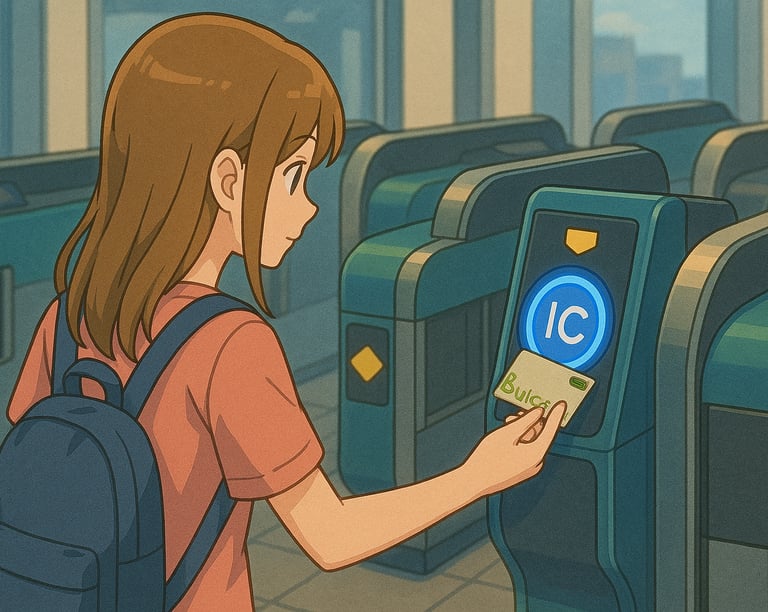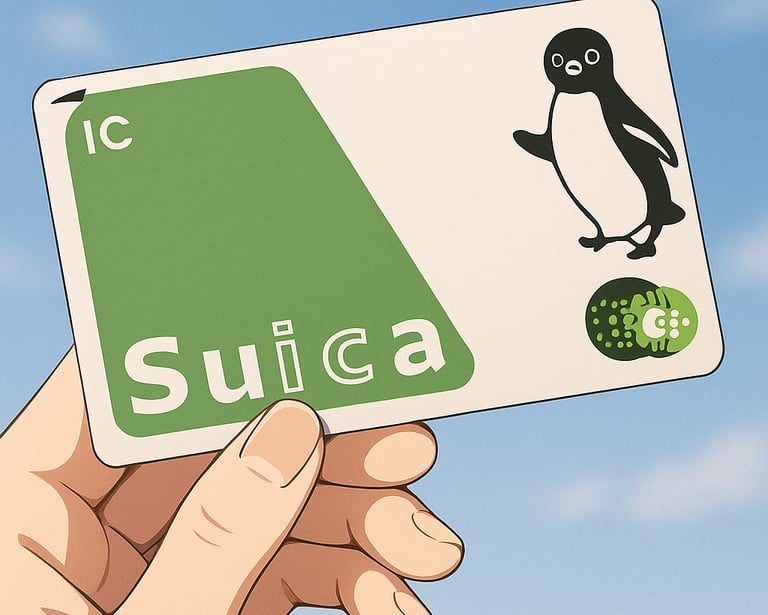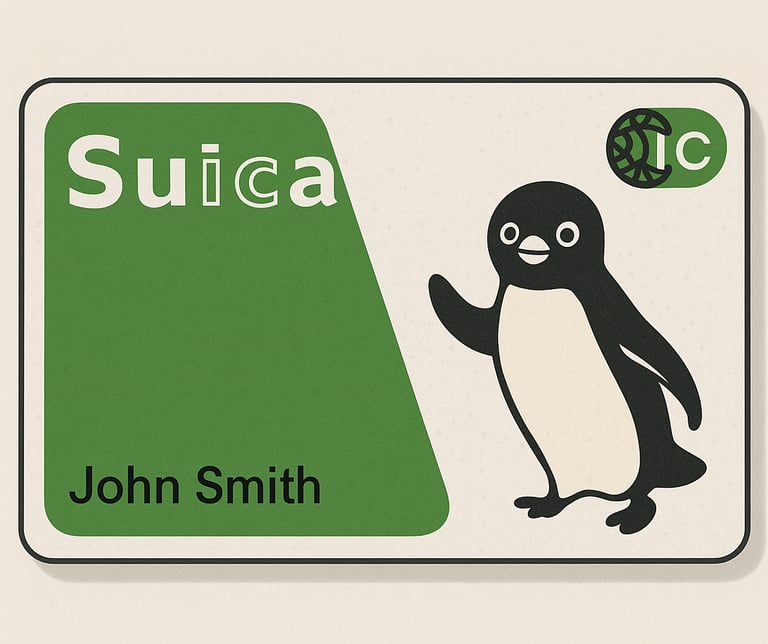What's Stopping You? Change Your Life!
Riding with Suica: Japans' Little Penquin Card
How to get and Use a Suica Card
JAPAN
10/2/20253 min read


In an earlier blog about traveling through Kawaguchiko, I mentioned using the Suica IC card. I cannot stress enough how important it is to get one of these. You can purchase them at airports when you land, or at major train terminals such as Tokyo Station (東京駅, Tōkyō-eki) and Shinjuku Station (新宿駅, Shinjuku-eki). I recommend getting it at the airport—Haneda, Narita, or Osaka—because although you may be tired from your flight, the train stations can be overwhelming.
Shinjuku, for example, is recognized as the busiest train station in the world, with as many as 3.5 million passengers passing through daily, since multiple train lines converge there. Tokyo Station is also busy, with roughly 500,000 passengers every day. To avoid the chaos, pick up your Suica card at the airport.
Some train stations are enormous and may or may not have English signage. Rely on Google Maps to navigate. You’ll notice locals glide through the ticket gates without breaking stride. They may be using a paper ticket, but more often they’re tapping a small, unassuming piece of plastic: the Suica card. You’ll also see people using their smartphones or Apple Watches at the gate—these work because a Suica card has been loaded onto the device.
The Suica card was launched in 2001 by JR East (East Japan Railway Company, 東日本旅客鉄道株式会社, Higashi-Nihon Ryokaku Tetsudō Kabushiki-gaisha). Originally intended as a ticketing solution, it quickly became much more.
The name “Suica” is a technical acronym—Super Urban Intelligent CArd—a nod to its cutting-edge contactless IC chip. But “suika” also means “watermelon” in Japanese, which inspired the card’s watermelon-green color. The penguin mascot was designed to symbolize what the company wanted commuters to feel: smooth, calm, and effortlessly mobile. Fun fact: early cards even showed the penguin carrying a slice of watermelon, though that design was later dropped.
The Suica is a stored-value prepaid card, much like a prepaid Visa or Mastercard. Load it with money, tap it at a train gate or bus reader, and the correct fare is deducted—no fumbling with tickets or change. Suica is interoperable with other IC cards across Japan: PASMO in Tokyo, ICOCA in Kansai, Kitaca in Hokkaidō, and others. Whether you’re hopping on a bus, or transferring between subway systems, Suica quietly does the math by deducting the cost of the fair automatically. The amount usually shows on the counter as you exit the gate. Make sure you look.
Its reach extends far beyond transportation. Suica doubles as e-money: tap it at a 7-Eleven, a vending machine, a McDonald’s, or even in some taxis, and your purchase is instantly paid for. In Tokyo Station, you’ll even find the Suica Penguin Café, where themed desserts feature the mascot.
I mentioned earlier that you will see passengers or commuters flash their phones or Apple Watches at the ticket gate. They are using the Mobile Suica app. This app allows the card to be stored on iPhones (via Apple Pay with FeliCa support) and on certain Android models. Tourists can even set one up before boarding their flight, recharging with an international credit card through Apple Wallet.
If you prefer a physical card, make sure you keep the receipt and ask to have your name printed in the lower left corner at the ticket office. Without a name, your card cannot be refunded or reissued if lost. (I learned this the hard way—at least $100 is sitting on lost Suica cards that didn’t have my name printed on them.)
The golden rule of Suica: always keep some credit on it. Keep at least ¥1,000 (about $6.50 USD) loaded, because you’ll be surprised how often it comes in handy.
I’ve had times when I boarded a bus assuming there was enough credit, only to discover I had spent it on snacks. In those moments, you’ll find yourself digging for loose yen and hoping fellow passengers are patient.
Trains: Tap the blue IC panel on the gate when you enter and again when you exit. Your fare and remaining balance flash on the display.
Buses: Tap the reader near the driver (or rear door, depending on the city). On flat-fare routes, one tap suffices; on distance-based routes, tap again when you get off.
Shopping: Tap at the register or vending machine. Look for the Suica logo, say “Suica de” (“with Suica”), and touch the reader.
When your card runs low, recharge at ticket machines, kiosks, convenience stores, or digitally in the app/Apple Wallet. Even the neighborhood 7-Eleven will do.
The Suica embodies something deeply Japanese: the blending of efficiency and playfulness. It began as high-tech infrastructure but, softened with a pun and a penguin, it became a friendly daily companion for millions of commuters. For travelers, Suica is more than just a ticket to Japan’s railways—it’s a key to everyday life, one that makes you feel, in your own small way, like a local gliding smoothly through the city.




